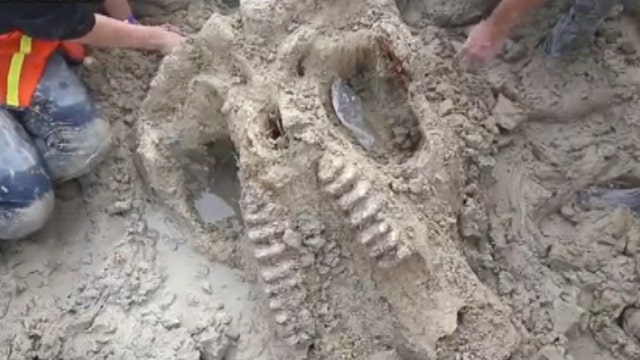A new species of mastodon -- a relative of the mammoth -- has reportedly been discovered by scientists.
Researchers announced the discovery of the Mammut pacificus in a paper published in PeerJ on Wednesday.
Previously, there was one main species of mastodon in North America, known as the Mammut american. This new species, however, was specific to the North American west, or where California is today.
Mastodons went extinct about 10,000 years ago, according to LiveScience.
WRECK OF US WWII B-24 BOMBER DISCOVERED 74 YEARS AFTER IT PLUNGED INTO THE SEA OFF BERMUDA
According to Gizmodo, this is the first time in 50 years a new species of mastodon has been discovered. These mastodons reportedly have narrower molars, more vertebrae in the pelvis and no lower tusk in their jaw, the outlet reported.
However, scientists aren’t sure what purpose those differences had for the Pacific mastodons.
"It's not necessarily a functional difference. It's more of a[n] ancestor descendant relationship they inherited," co-author Eric Scott said at a presentation on Wednesday, Tech Times reported.
15TH-CENTURY WARLORD’S SWORD DIGITIZED MORE THAN 500 YEARS AFTER HIS DEATH IN BATTLE
Alton Dooley, Jr., the lead author of the paper and executive director of the Western Science Center, told Gizmodo he and his co-authors didn’t think it was possible a new species could be discovered because these kinds of animals -- Pleistocene -- are incredibly well studied.
“I’m shocked that there’s a mastodon taxon that went unrecognized for so long,” he told the outlet.
Dooley, Jr. and his co-authors reportedly discovered the new species from fossils that had been excavated from Diamond Valley Lake in the 1990s, after examining more than 500 mastodons, Tech Times reported. Since the fossils were excavated, they have been stored at the Western Science Center in Hemet, Calif.





















